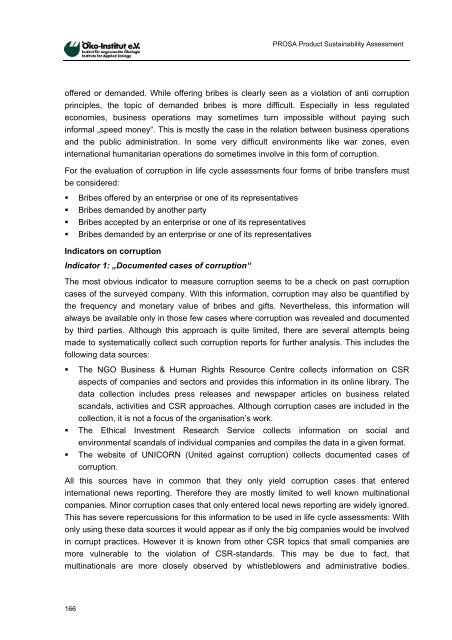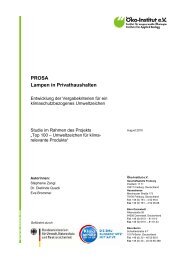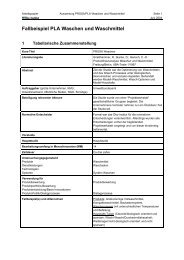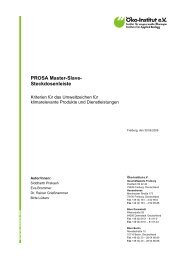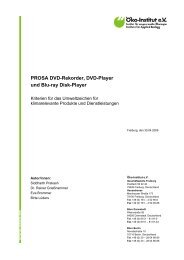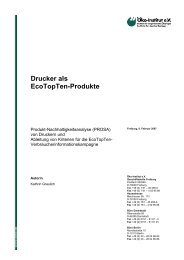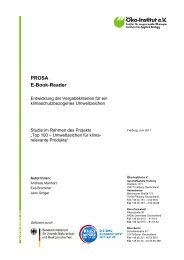PROSA – Product Sustainability Assessment - PROSA - Produkt ...
PROSA – Product Sustainability Assessment - PROSA - Produkt ...
PROSA – Product Sustainability Assessment - PROSA - Produkt ...
Sie wollen auch ein ePaper? Erhöhen Sie die Reichweite Ihrer Titel.
YUMPU macht aus Druck-PDFs automatisch weboptimierte ePaper, die Google liebt.
<strong>PROSA</strong> <strong>Product</strong> <strong>Sustainability</strong> <strong>Assessment</strong><br />
offered or demanded. While offering bribes is clearly seen as a violation of anti corruption<br />
principles, the topic of demanded bribes is more difficult. Especially in less regulated<br />
economies, business operations may sometimes turn impossible without paying such<br />
informal „speed money“. This is mostly the case in the relation between business operations<br />
and the public administration. In some very difficult environments like war zones, even<br />
international humanitarian operations do sometimes involve in this form of corruption.<br />
For the evaluation of corruption in life cycle assessments four forms of bribe transfers must<br />
be considered:<br />
• Bribes offered by an enterprise or one of its representatives<br />
• Bribes demanded by another party<br />
• Bribes accepted by an enterprise or one of its representatives<br />
• Bribes demanded by an enterprise or one of its representatives<br />
Indicators on corruption<br />
Indicator 1: „Documented cases of corruption“<br />
The most obvious indicator to measure corruption seems to be a check on past corruption<br />
cases of the surveyed company. With this information, corruption may also be quantified by<br />
the frequency and monetary value of bribes and gifts. Nevertheless, this information will<br />
always be available only in those few cases where corruption was revealed and documented<br />
by third parties. Although this approach is quite limited, there are several attempts being<br />
made to systematically collect such corruption reports for further analysis. This includes the<br />
following data sources:<br />
• The NGO Business & Human Rights Resource Centre collects information on CSR<br />
aspects of companies and sectors and provides this information in its online library. The<br />
data collection includes press releases and newspaper articles on business related<br />
scandals, activities and CSR approaches. Although corruption cases are included in the<br />
collection, it is not a focus of the organisation’s work.<br />
• The Ethical Investment Research Service collects information on social and<br />
environmental scandals of individual companies and compiles the data in a given format.<br />
• The website of UNICORN (United against corruption) collects documented cases of<br />
corruption.<br />
All this sources have in common that they only yield corruption cases that entered<br />
international news reporting. Therefore they are mostly limited to well known multinational<br />
companies. Minor corruption cases that only entered local news reporting are widely ignored.<br />
This has severe repercussions for this information to be used in life cycle assessments: With<br />
only using these data sources it would appear as if only the big companies would be involved<br />
in corrupt practices. However it is known from other CSR topics that small companies are<br />
more vulnerable to the violation of CSR-standards. This may be due to fact, that<br />
multinationals are more closely observed by whistleblowers and administrative bodies.<br />
166


